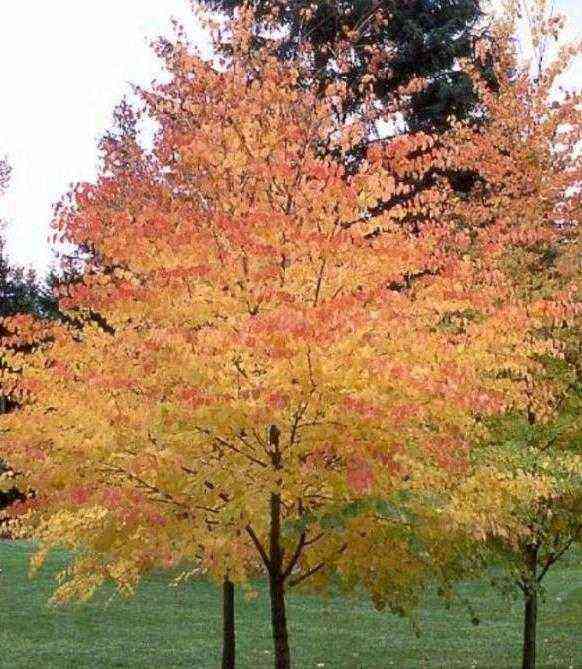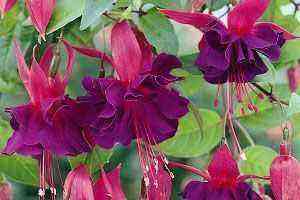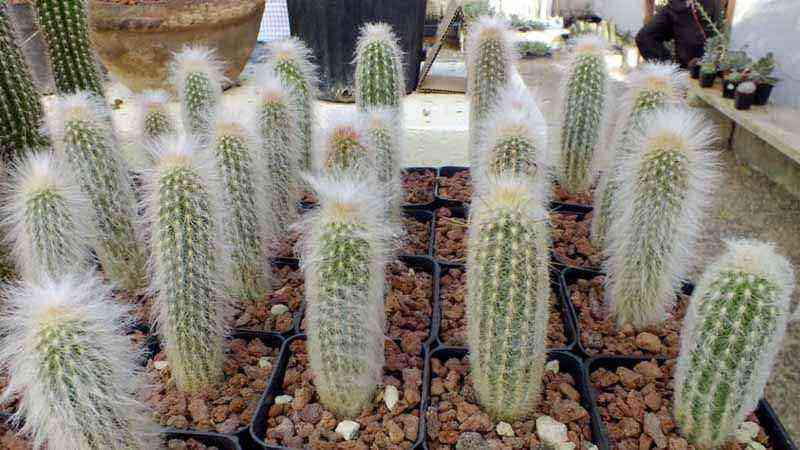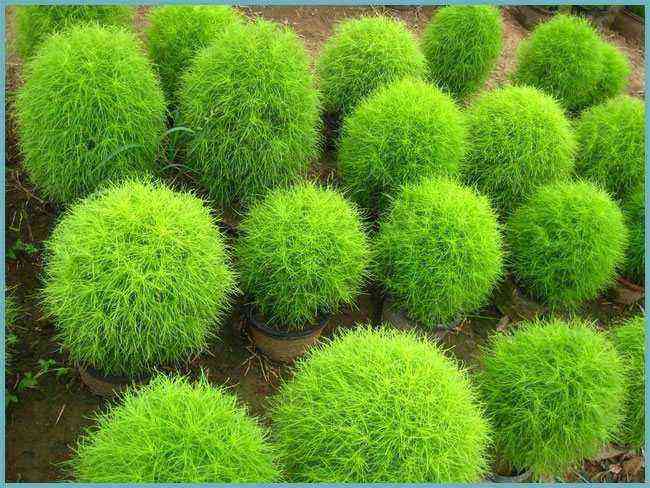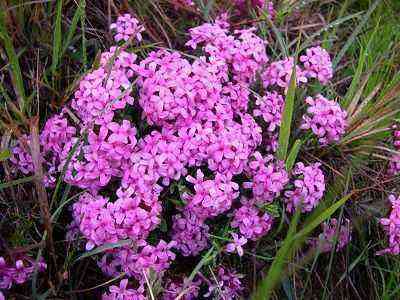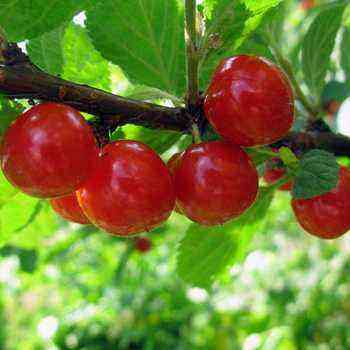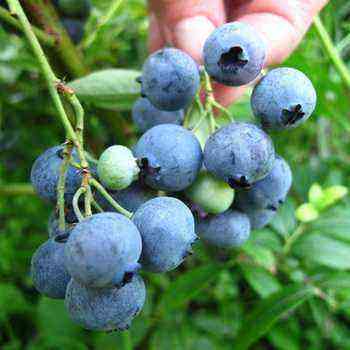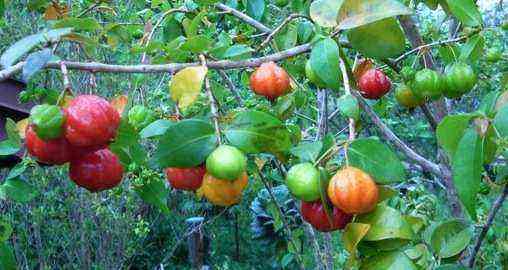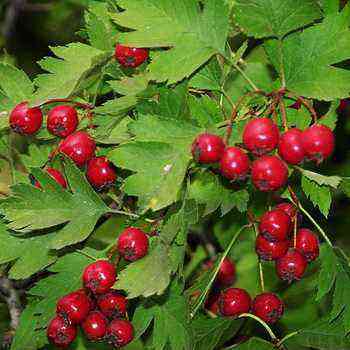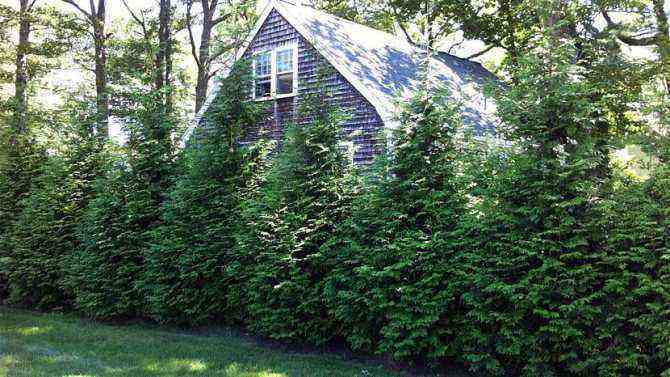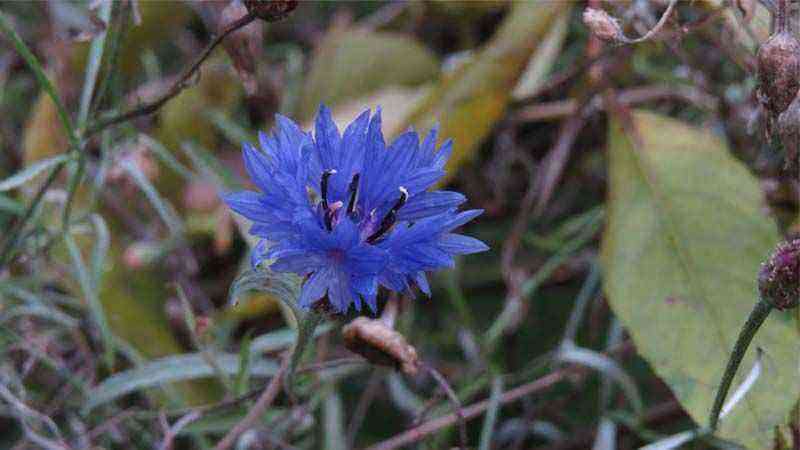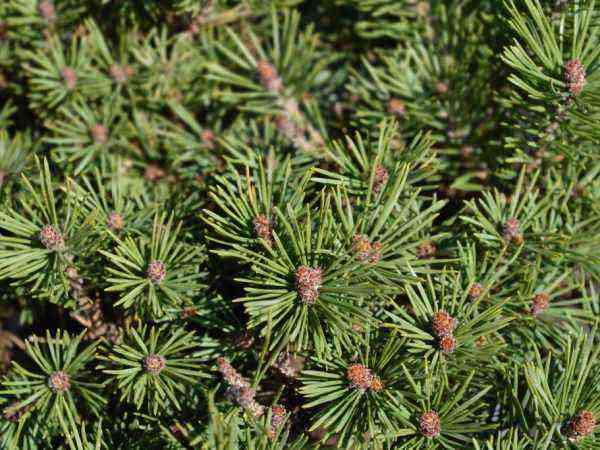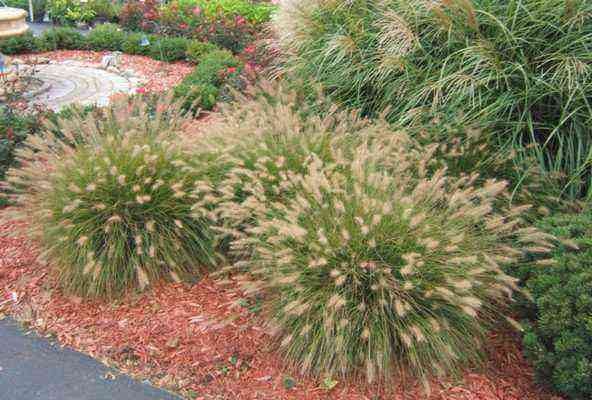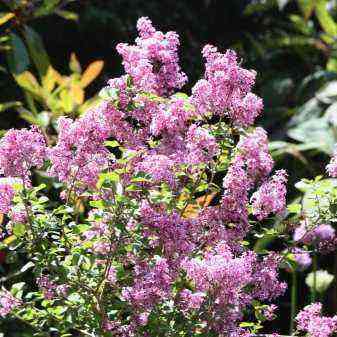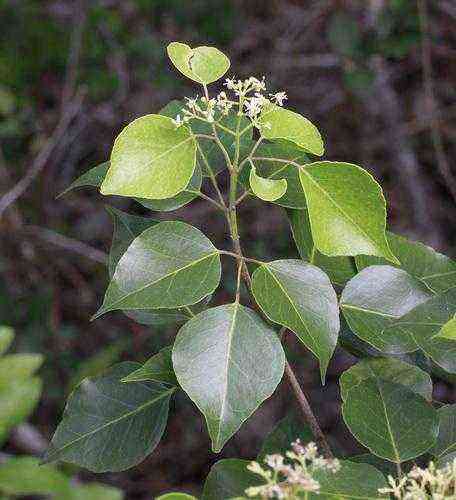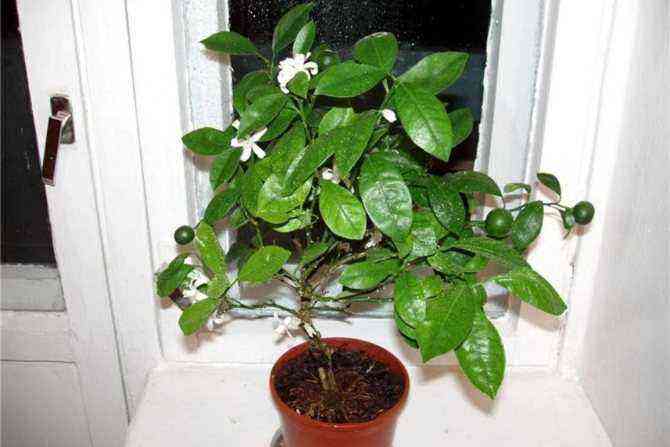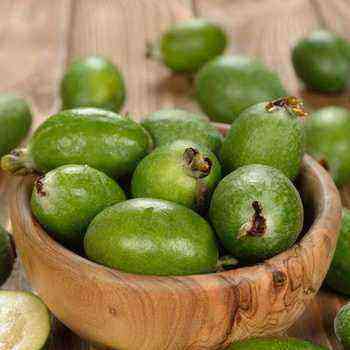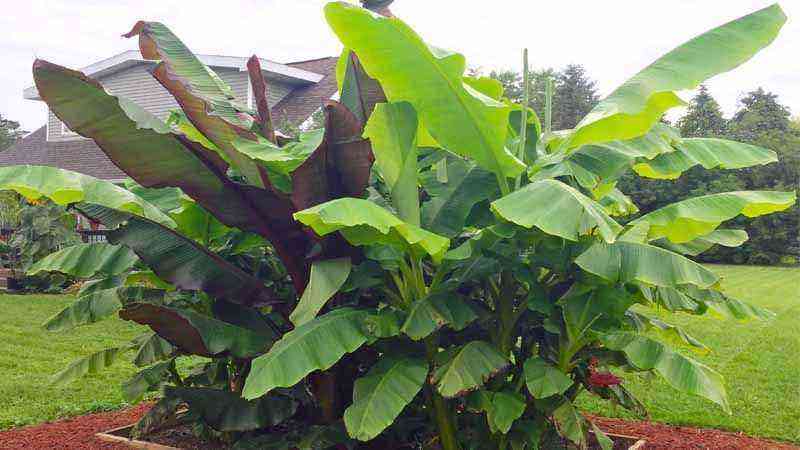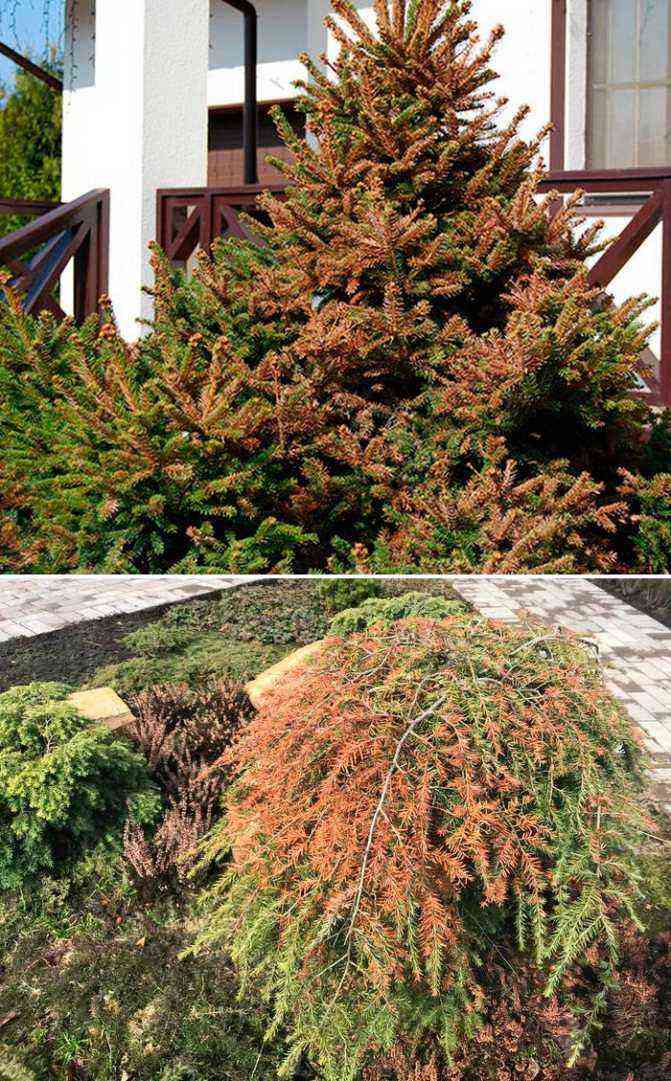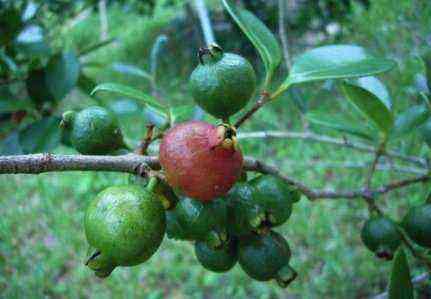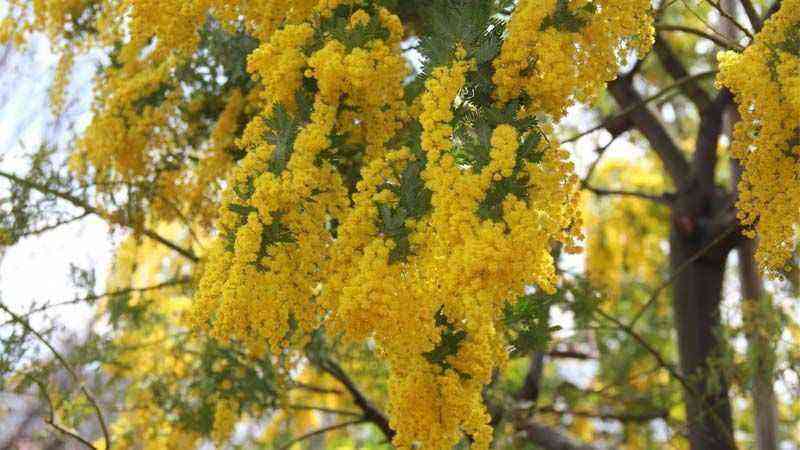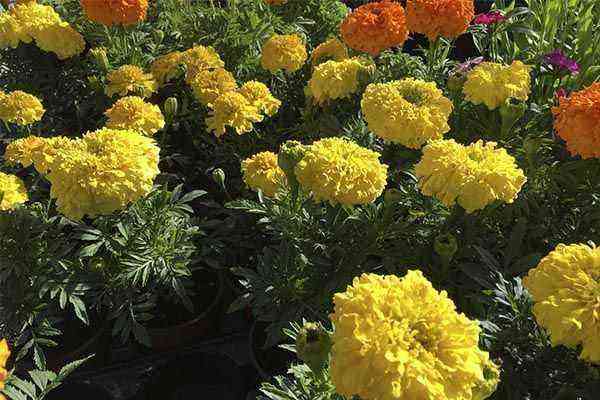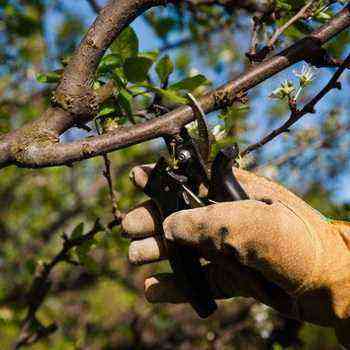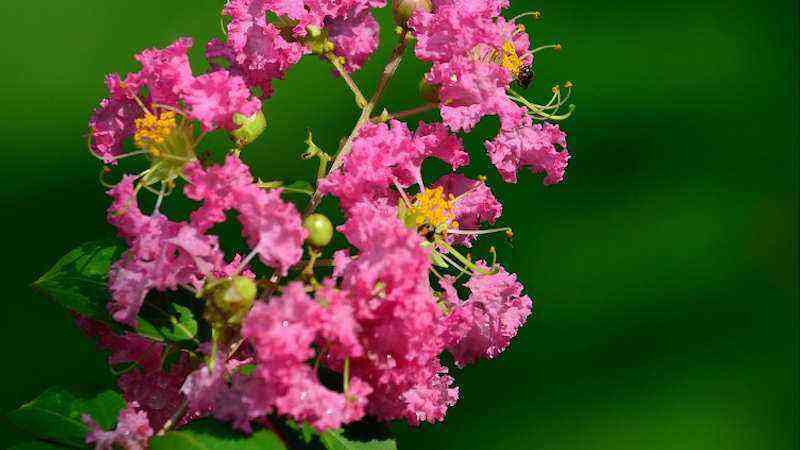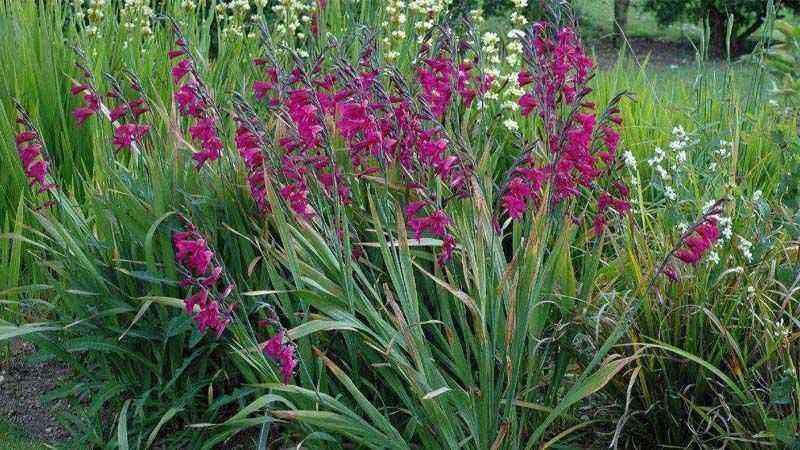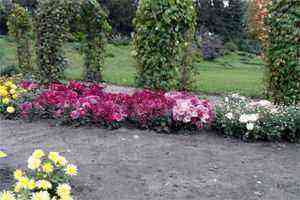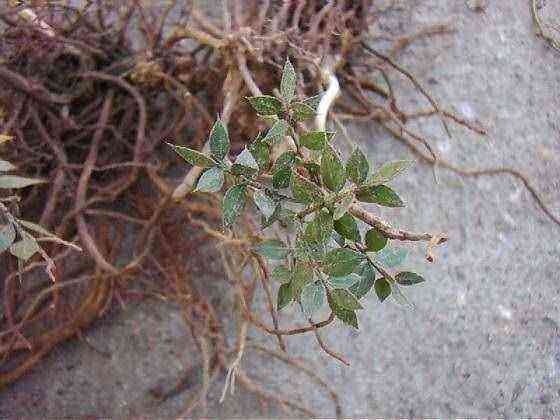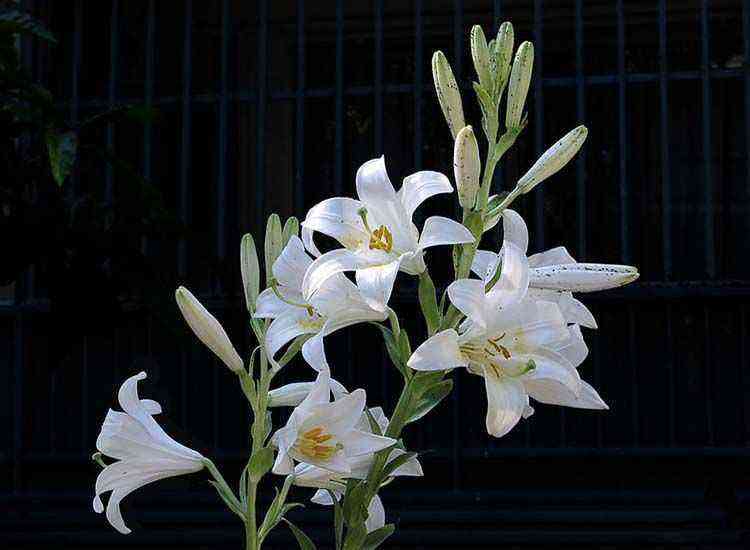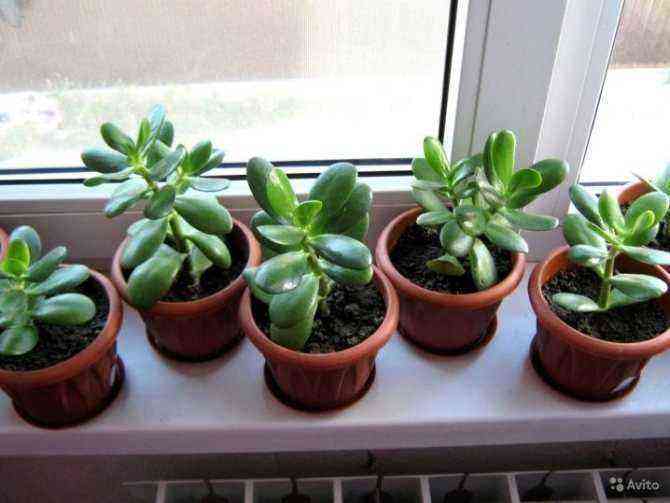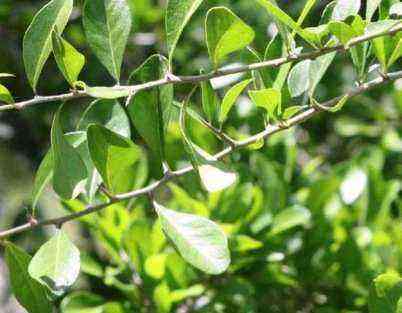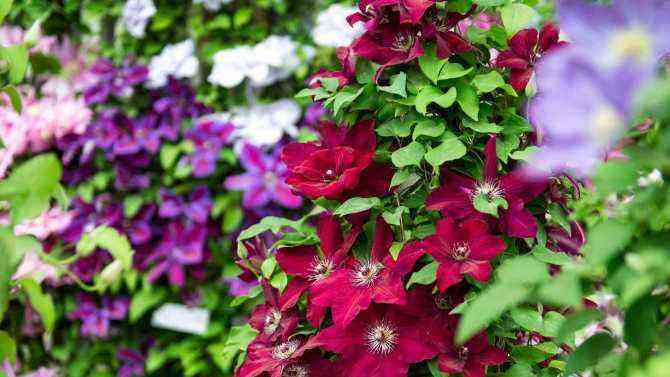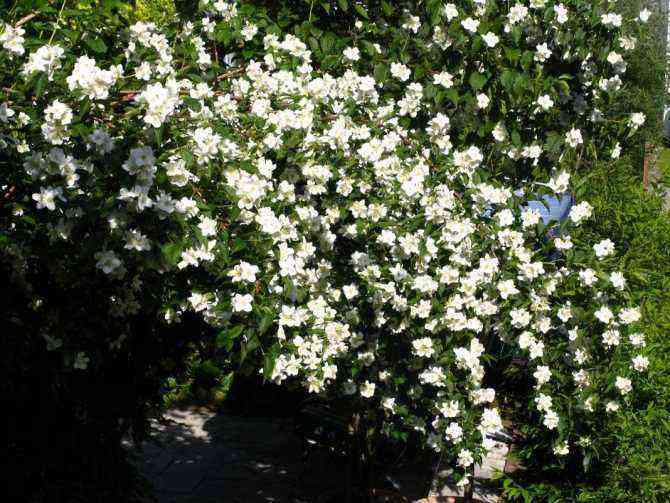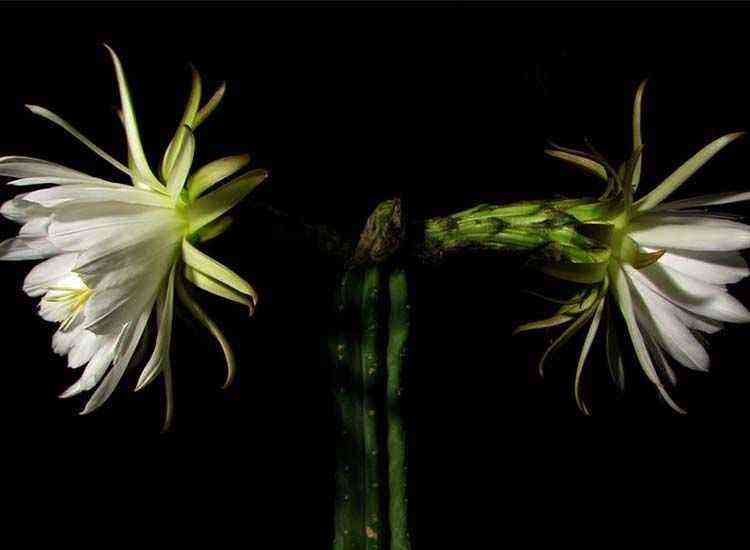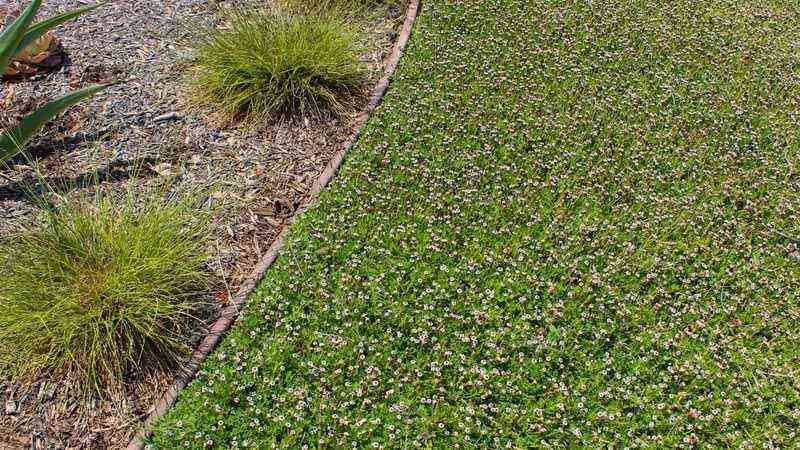The Japanese scarlet plant (Cercidiphyllum) belongs to the Crimson family. In its natural environment, it lives in the deciduous forests of China and Japan. A tree in its natural environment can reach about 30 meters in height. On the site, the length of the purple scarlet does not exceed seven meters. Under favorable conditions, it forms a wide massive crown of a pyramidal shape. There are pronounced cracks on the gray bark. Heart-shaped leaves, about 8 cm in diameter, marked with red veins. The dioecious plant changes color several times during the year. Miniature inflorescences appear until the leaves fully open. The fruit includes several leaflets. The plant is widely used in landscape design. There are only 2 types of cercidiphyllum. Only one is grown in the culture. There are also two extinct species of scarlet.
How to care for a plant at home
The plant is highly frost-resistant.
Temperature
Japanese scarlet can withstand moderate continental climatic conditions. Mature plants can tolerate extreme temperature changes and severe frosts.
It is advisable to cover young seedlings for the winter. In summer, you should avoid drying out the substrate in conditions of extreme heat and low air humidity.
location
A semi-darkened area is perfect for growing a plant. Exposure to direct sunlight is harmful to young seedlings.
Watering
Japanese scarlet is a moisture-loving plant. During the dry season, the tree may shed its foliage prematurely. It is recommended to plant the plant near water bodies.
The landing site must be prepared in advance. You can increase the permeability of the soil with a thick drainage layer. It is advisable to plant Japanese scarlet in an area without surface groundwater.
How to transplant
The plant does not tolerate transplanting well and rarely takes root in a new site.
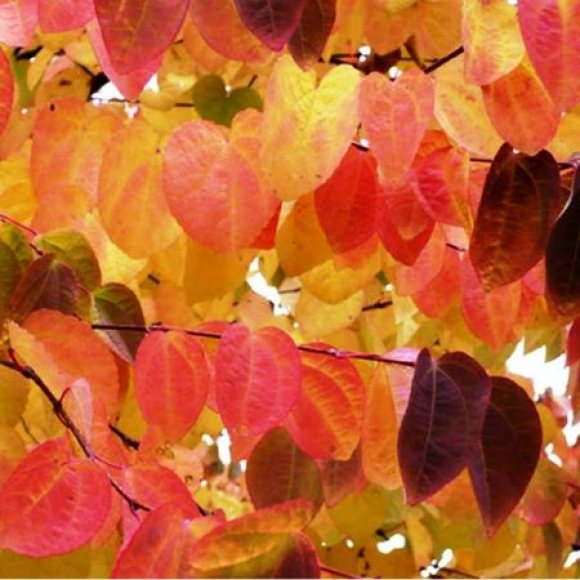

An adult plant may not survive a transplant.
The taproot can be damaged when removed. Therefore, it is recommended to use a closed root system of a seedling or a young plant with bare roots for planting.
Correct pruning
The Japanese scarlet tree naturally forms a delicious crown. For compactness, you can cut the plant. With periodic adjustments, you can create a stunted plant structure.
After winter dormancy, it is necessary to cleanse the plant from damaged shoots. Other shrubs can be planted next to the purple bush. The lower branches should be removed.
To form a standard tree (a plant with a bare trunk and a wide crown), it is necessary to clear the one and a half meter stem from the lower branches.

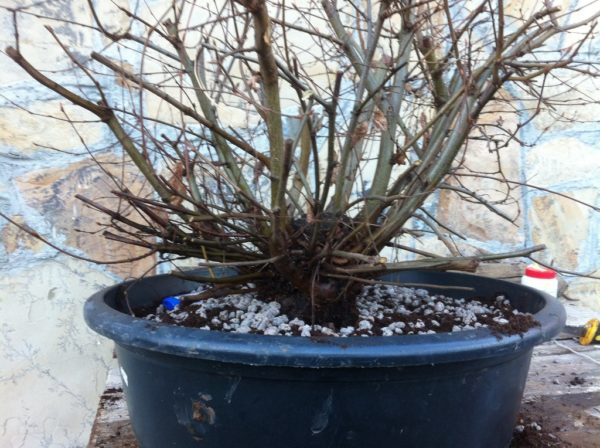
In the spring, it is necessary to cleanse the plant from damaged areas.
Mature plants need to be sanitized. It is not recommended to prune and correct the formed trees.
Description of crimson
In its native habitat, a tree often grows into a giant, reaching almost 30 meters in height with a trunk girth of 5-6 meters. Of course, in central Russia, the plant will be much smaller, up to 4-7 m in height, but this is enough for the Japanese scarlet to gain popularity in the Moscow region for its beauty and not too demanding attitude to living conditions and care.
The plant resembles a shrub in its appearance, having in its composition not one, but many trunks, forming a cone-shaped crown. The tree bark dotted with cracks, together with heart-shaped leaves with an unusual shade of crimson or reddish color, gives the plant an amazing, exotic decorative effect. The newly emerging foliage of a pale pink color begins to darken over time, becoming golden-sandy by autumn. Reddish and crimson streaks clearly visible on the leaves give them additional charm.
During the flowering period, the plant also looks amazing. Bright purple flowers with a pinkish tint cover the branches, forming continuous inflorescences when the leaves are not yet on the tree. The delicate aroma of vanilla surrounds the flowering plant, adding to its attractiveness. Therefore, the scarlet plant is increasingly becoming a welcome guest of personal plots and park recreation areas.
Although the tree comes from warm countries with a subtropical climate, not every southern plant feels as good in central Russia as Japanese scarlet. The winter hardiness of the plant is such that it can withstand low temperatures, up to 30 degrees below zero. Of course, young seedlings need more careful care than adult trees, including shelter from the winter cold. Nevertheless, a patient gardener is able to overcome the difficulties arising on the path of growing this exotic plant and start this outlandish beauty on his backyard.
Optimal growing conditions and care for hazelnuts
Scarlet in open soil
An exotic plant is rarely found at home. Few know the conditions for growing an unpretentious oriental tree. Seedlings in the public domain can be purchased in specialized garden nurseries. All subspecies are imported from Poland, Holland and Germany.
Under favorable conditions, an ornamental plant can develop rapidly over several years. In just one season, a seedling on a site can add about forty centimeters.
It is recommended to plant annual seedlings outdoors. A distance of at least 20 cm should be left between the purple kernels.
During the spring and summer seasons, it is desirable to stimulate the development of scarlet in the open air with mineral components. For a tree, you should purchase:
- Phosphate fertilizers. The rate of one feeding is 15 grams.
- Potassium based fertilizers. Enough twenty grams.
- Nitrogen substances. The volume of the drug should be ten grams.
Delightful bloom of purple in late April:
Application in landscape design
The geography of growing this type of plant is constantly expanding. If the presence of a tree on personal plots in the Moscow region is no longer surprising, then the appearance of a scarlet tree even further north, for example, in the Leningrad region, is still a novelty. Nevertheless, patient gardeners have learned to successfully grow exotic plants in these latitudes.

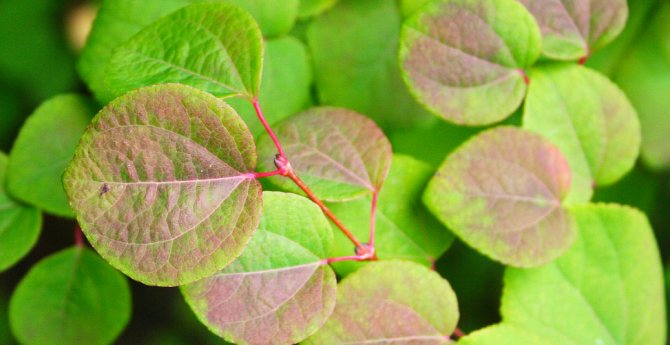
We all understand how important the visual beauty of the garden is. Plants can be as healthy, rare and useful, if they are unattractive to the eye – the effect will be “wrong. And when the words “visual beauty” are recalled, for some reason, first of all, beautiful flowers or a lawn of emerald grass dotted with them are remembered. However, you must admit that plants that are completely different, but therefore no less beautiful, immediately come to mind: variegated herbs, serious conifers, creeping ground covers – and of course graceful deciduous trees. For example, the scarlet.
Japanese scarlet (Cercidiophyllum japonicum) is an oriental plant that has spread to gardens around the world from China and Japan. The name itself indicates that the scarlet has “leaves like cercis” – and it is really confused with cercis (Cercis siliquastrum, for example)! But these plants are completely unrelated to each other: cercis belongs to the legume family (Fabaceae) and is prized for its wonderful pink flowers. And our scarlet comes from the family of the same name Crimson (Cercidiphyllacea) and is loved by everyone for the beautiful color of the foliage and the shape of the crown.
Peculiarities of growing
Soil mixture
Japanese scarlet can be planted on any kind of soil. Rapid development will be provided by slightly acidic loamy soil and sandy loam.
It is advisable to periodically loosen the ground at the base of the trunk. The light soil allows the numerous superficial roots to maintain wind resistance.
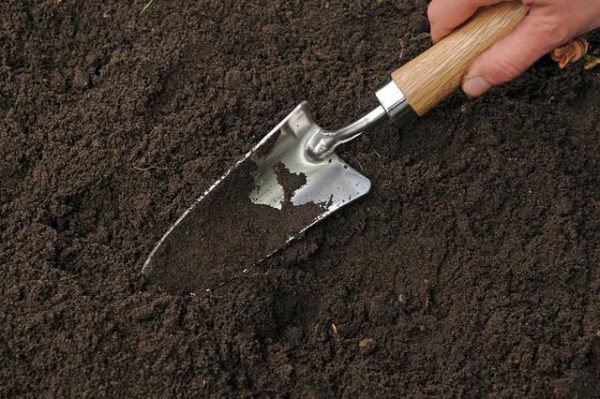
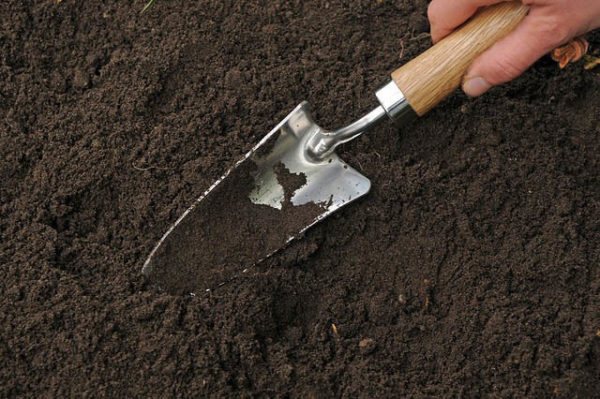
For growing purple, a light substrate should be prepared.
Additional fertilizing
Japanese scarlet in a container should be watered with mineral fertilizers. The preparation should contain a low nitrogen content.
Purple in a pot
Eastern culture can also be grown indoors. It is important to follow a few rules of proper care. The plant has a fairly fast growth and thin branches. Shoots are often bent. The tree may topple over.
It is important to choose the right container. Purchase a stable container. It is recommended to plant the purple in a wooden tub. The growth of the tree directly depends on the volume of the earthen coma.
You can maintain the dwarf shape of a house tree by constant pruning and shortening of the side shoots.
Using the bonsai technique, you can grow a miniature Japanese plant in any room. It is important to maintain a sufficient level of humidity for the crimson.
More about the plant
As already mentioned, Japanese scarlet is a deciduous tree, which in its homeland reaches up to 30 m in height and 5-6 m in trunk girth.
Trees used in horticulture most often do not exceed 4-7 m in height. Most often, the tree grows with several trunks from its base, and its voluminous and spreading shape most often has a wide pyramidal shape.
Due to its shape, the young plant has a noticeable resemblance to shrubs.
The bark of the tree is fissured, and its color can vary from light to dark gray. But for all its merits, all the same the main advantage of the tree is the unusual shape and color of its leaves.
As a rule, the leaves have an original cordate or slightly rounded shape with reticular veins. The veins are reddish or crimson.


Roundwort is one of the popular decorative deciduous species, and the main reason for this is the unusual color of its leaves, which changes several times during the season.
Only the blossoming leaves of the scarlet tree look extremely impressive – they have an attractive pale pink color. As the foliage blooms, its hue changes – from light blue or purple to golden sand.
It is the unusual, changing color of the leaves, as well as their unique, delicate aroma, reminiscent of vanilla, that give the plant a particularly spectacular and noble look, which harmoniously fits into absolutely any park or backyard area.
The video shows how the crimson blooms in the Crimea.
Plant response
The main attraction of scarlet is the unusual formation of inflorescences. Bud flowers appear not only in the leaf axils. The buds can bloom on the trunk and thick branches. Often, lush buds form from dormant buds.
The sweet aroma of the buds is reminiscent of a caramel smell. The plant is often referred to as the gingerbread tree due to its pronounced note of sweet biscuits. The smell of the tree lasts until late autumn.
The plant is capable of causing allergic manifestations. It is recommended to handle wood with protective gloves. After the onset of characteristic itching or rhinitis, contact with the allergen should be limited. The scarlet plant, planted in a container, must be taken out of the room. If symptoms persist within an hour, an antihistamine should be taken.
Japanese scarlet Pendula
The most common form of Japanese scarlet is Pendula. It gained popularity due to its unusual decorative appearance, reminiscent of a weeping willow. Pendula reaches a height of six meters.
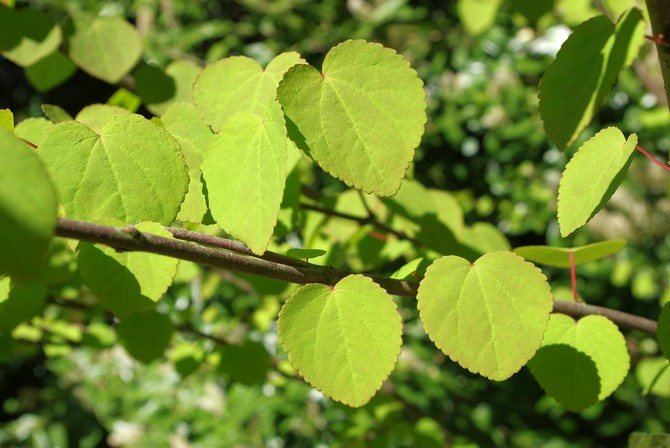
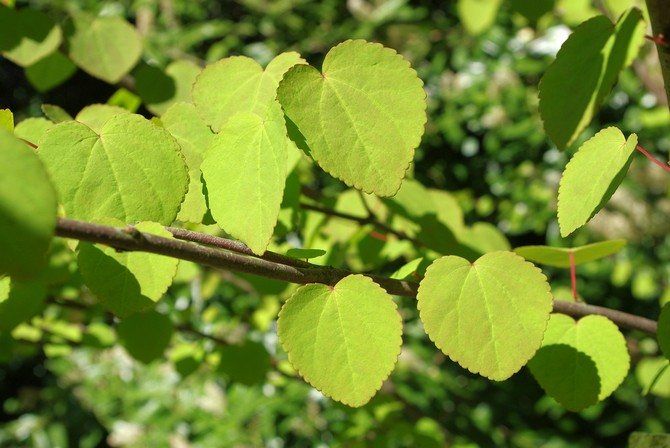
The external characteristics of the tree are as follows: the bark is dark gray in cracks, leaves up to 10 centimeters, blooming are red, then green, turn yellow by autumn, then become bright orange and red. Pendula blooms inconspicuously, has small bright fruits that ripen by September. The plant is drought tolerant.
Reproduction technique
The plant can be propagated by cuttings and planting seeds.
Crimson seed
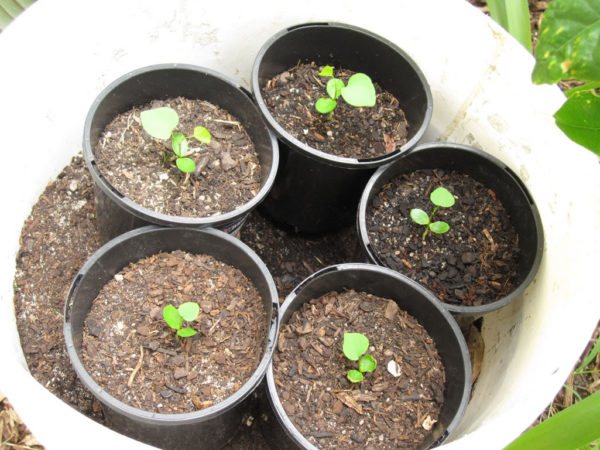
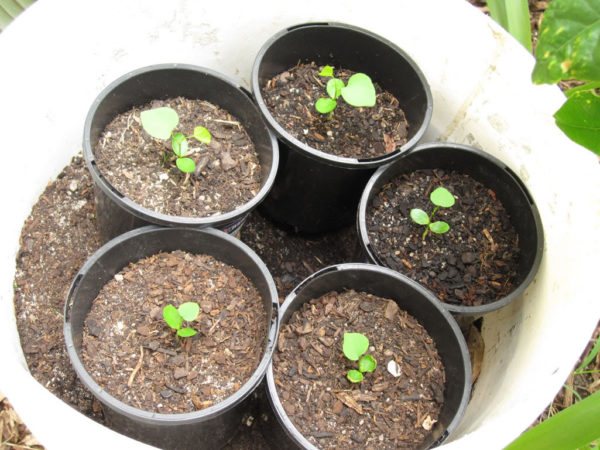
Germination of scarlet seeds.
High-quality seed is easy to prepare at home. You will need a female and male tree to collect seeds. After pollination, the seeds can be removed from the seed pod.
Crimson can be planted in the fall. This requires a shallow container. Expanded clay should be laid out at the bottom of the container. A mixture of lightweight substrate and perlite should be used as a filler. Seeds must be carefully scattered onto the soil surface and carefully leveled. The container must be moved to a dark and cool room.
You can leave the planting material for growing in early spring. Fruits (leaflets) should be placed in an air-permeable paper bag. Germination can be increased using stratification (exposure to temperature). To do this, transfer the seeds to the refrigerator on a no frost shelf.
The planted seeds will sprout in an average of fifteen days. It is necessary to maintain the temperature from + 21 to +25 degrees. The percentage of seed germination in spring will be reduced to 25%.
Young seedlings are highly sensitive to dry conditions. A few hours in a dry substrate can kill the seedlings.
Cutting
For propagation by cuttings in the spring, it is necessary to prepare stems about fifteen centimeters long. Experienced gardeners recommend performing the procedure in late June or early July. In the summer, there is a higher chance of rooting cuttings.
For planting, you need to prepare a greenhouse. The temperature of the medium should be around + 22— + 25 degrees. The air humidity must be kept at 60%. As a substrate, you should prepare holes 7 cm deep. You need to pour about 3 cm of sand into the hole and plant the shoots at an angle of 45 degrees.
You can fill the groove with a mixture of leafy soil, ready-made soil for seedlings and river sand. The planted cuttings must be constantly watered. Cover the plant with a layer of mulch to protect and retain moisture.
After 45 days, the first leaves will appear on the purpleberry.
Reproduction of Japanese scarlet by cuttings
Cutting is the most affordable and easiest way to propagate scarlet. It is enough to cut off green twigs in June-July and put a nutritious soil mixture in water or wet sand. Preliminary exposure of the cuttings in a solution of epin, heteroauxin or root root will have a positive effect. This will enhance the rooting process.
The cuttings can be covered with plastic bags or cups to create a high humidity greenhouse environment to further accelerate root formation. A month later, the seedlings will start up young shoots, which will indicate a successful rooting.
How to choose planting material
Gardeners say that self-harvested seed cannot produce new plants. As practice shows, subject to the conditions of stratification, you can grow a tree at home.
In the official dealerships, Japanese scarlet, 170 cm high, can be purchased at a price of 5690 rubles. A package of Japanese scarlet seeds (5 pieces) is sold for 150 rubles.
Often in garden dealerships under the guise of “scarlet” they sell the cercis plant, which has a low threshold of winter hardiness. The leaves of cercis are similar to purple. It is possible to recognize cercidiphyllum by the opposite arrangement of foliage. In cercis, the vegetative organs are formed alternately.
Crimson is difficult to transfer. Therefore, it is advisable to choose seedlings planted in a container. Buyers often complain about the deception of nurseries. On one tree, leaves of different shades (yellow, green and crimson tint) can actually form at the same time. But the autumn color directly depends on the quality of the substrate and microclimatic conditions.
Growing scarlet seeds from seeds


Japanese scarlet seeds photo
Seeds are harvested at the end of September-October and immediately sown in a seedling box to a depth of 1-2 cm. The box is taken out into the garden and covered with a layer of leaves. This natural stratification will be very beneficial, and up to 70% of the seeds will sprout in the spring. At the onset of thaws (in March), the box with seeds is freed from the shelter and brought into the house.
Stratification can also be carried out in the refrigerator by keeping the seeds in a damp cloth wrapped in a plastic bag.

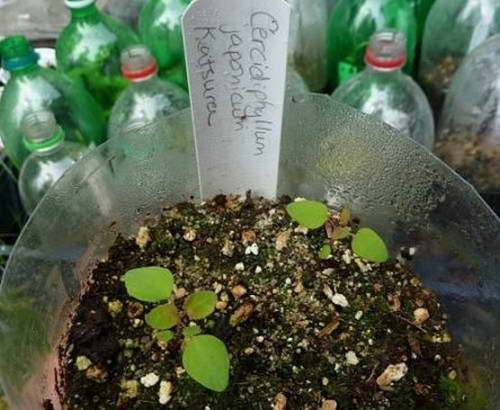
Seedlings of Japanese scarlet Photo of seedlings
Germinate seeds at room conditions, observing the condition of regular watering. Seedlings develop slowly, so don’t worry. When two or three true leaves appear, the plants are transplanted into separate pots for further growing, carefully moving with a lump of earth, trying not to damage the root.
Excerpts from the botanical description
The scarlet is a member of the Legumes family. The second name is Certsis. This is a fairly large plant, the average height of which is 15 m, the maximum height is 30 m (it reaches only in natural conditions). The growth of a tree starts from the base, grows into several trunks.
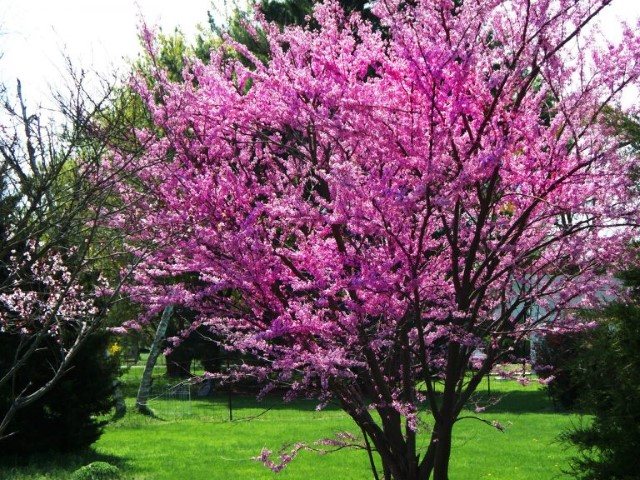
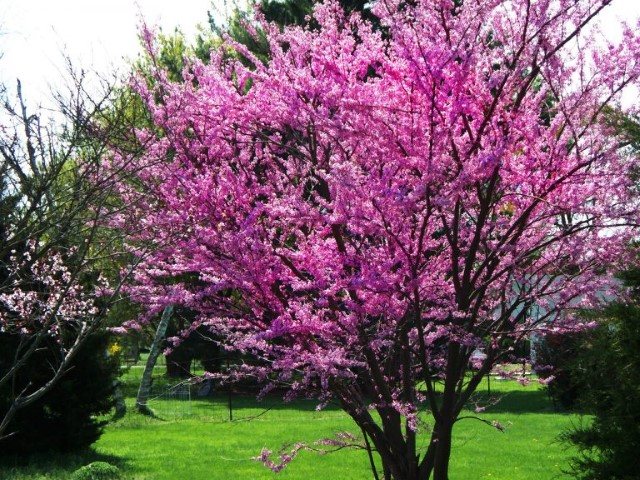
Culture appearance:
- cracked bark (fractured type);
- in young plants, the bark has a reddish tint, in old plants it is gray-marsh or brown;
- leaf shape – heart-shaped, size – 6-9 cm;
- from above the leaf plate is bluish-green, from below it is gray or whitish;
- at the beginning of blooming, the leaves are painted in pale pink, have an even glossy shine.
Japanese scarlet: planting and care

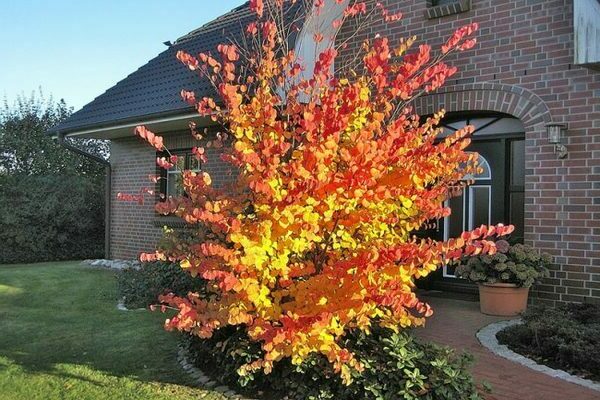
Japanese scarlet tree: photo
It is best to grow scarlet in a well-lit area. The soil should be drained, nutrient-rich and loose. You can additionally fertilize the soil before planting. If you did not find a sunny area in your garden, then you can plant the Japanese scarlet in partial shade. It is best to buy Japanese scarlet together with an earthen lump or in a pot. During planting, do not damage the fragile root system, it is pivotal in this culture, so there are not so many adventitious roots. That is why plant transplantation is poorly tolerated. So immediately choose the correct planting sites for Japanese scarlet, the plant will not survive a new pick in adulthood.
The planting hole should also be prepared in advance, rotted compost and humus are added there. The root collar is not buried, the seedling is placed in the middle of the pit, spreading the roots well. The ground after planting the Japanese scarlet will definitely need to be compacted, and the plants are well watered. Make sure that the soil does not dry out, this is necessary in order for the scarlet to adapt faster to new conditions, so it grows and develops better. It is believed that this plant is quite moisture-loving. Therefore, if drought or abnormal heat very often occurs in your region, then Japanese scarlet can discard leaves. To prevent this from happening, you will need to water the plants regularly. To do this, the near-stem circle is moistened, and the near-stem zone is also mulched. Sawdust, straw and dry grass are used as mulch. In addition, it makes the soil looser and well structured, which means that the roots will also breathe. Mainly only young animals are fed. They are the ones who need fertilizers in order for the plants to grow green mass. It is undesirable to apply top dressing with an excessive nitrogen content to the soil; use complex fertilizers. Top dressing is usually applied either in spring or early summer. When the twigs begin to grow woody, it is no longer necessary to feed the crop.
The Japanese scarlet tree – cercidiphyllum japonicum – blooms very abundantly, but only for a week, so you will not be able to please yourself with a wonderful vanilla aroma for long. But the decorative quantities of these plants are no less attractive, if in your region there are sometimes return frosts in the spring, then do not be afraid, although the scarlet usually freezes, it is actively recovering. Do not forget about pruning, it should be done in early spring. To do this, you will need to remove all diseased and deformed shoots that will interfere with the development of the plant. The branches that thicken the crown will also need to be removed, but you can form the crown as you wish.
